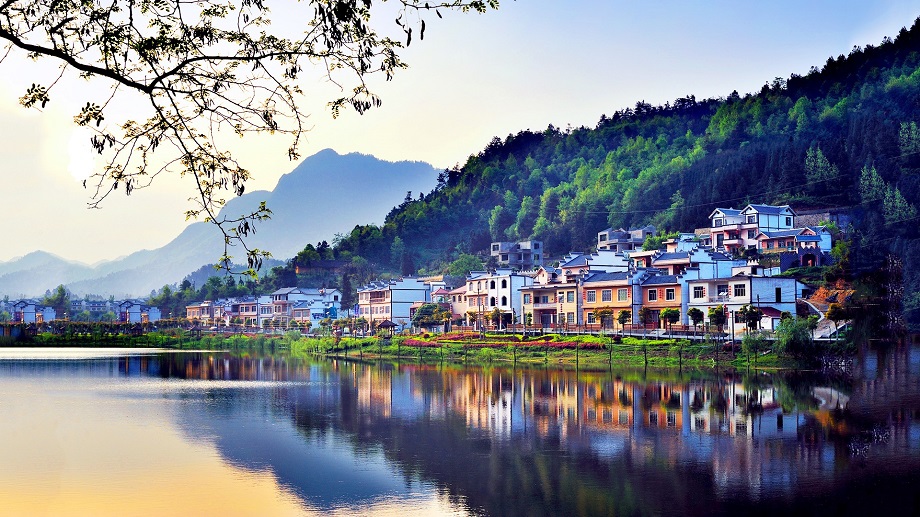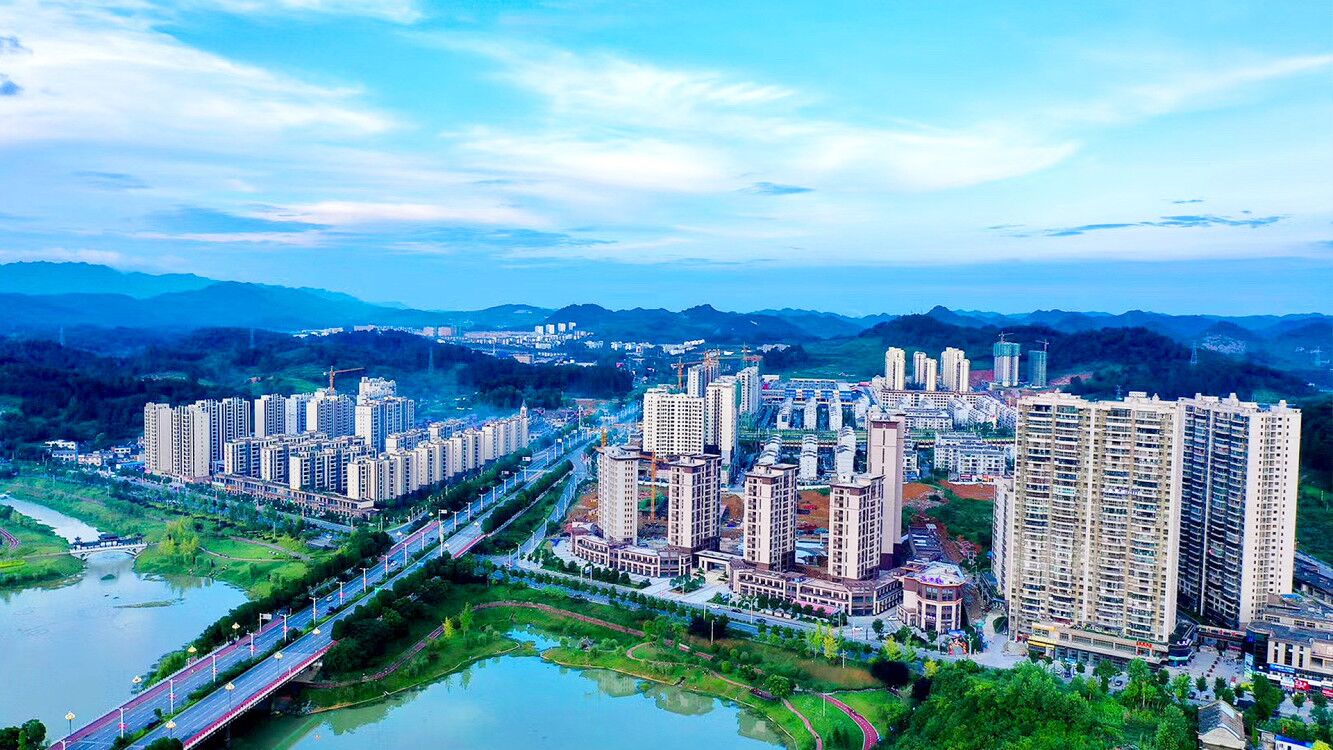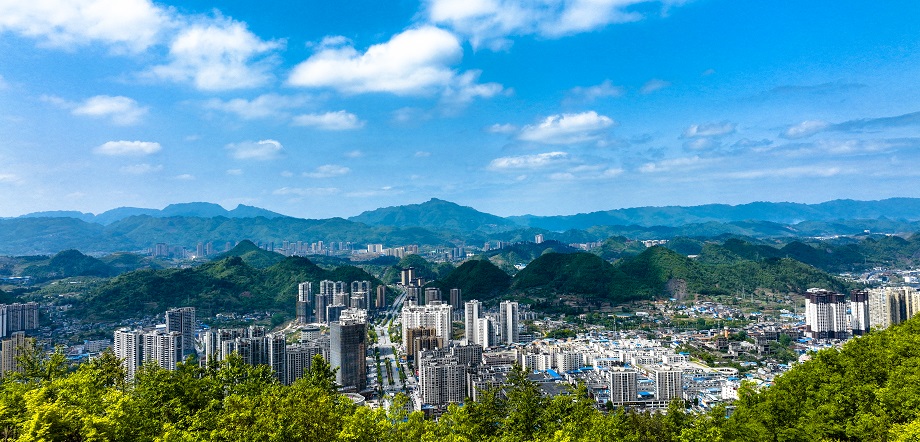- Profile Jurisdictions GOV DEPARTMENTS Cultures Travelling Educate
-
Jinsha County is located in the northwestern part of Guizhou Province, in the eastern part of Bijie City, at the junction of Guiyang, Zunyi, Bijie, and Luzhou in Sichuan Province. It lies between 27°07' and 27°46' north latitude and 105°47' and 106°44' east longitude. It is situated in the transitional zone of the northwestern Guizhou Plateau. The southwestern part of the county is high, while the northwestern and southeastern parts are low. Most of the county has an altitude ranging from 800 to 1,100 metres, with relative elevation differences of 600 to 1,200 metres. The eastern region features gentle terrain undulations, with karst hills, eroded residual hills, valleys, and alluvial plains interspersed. The central region, except for deeply incised river valleys and structurally discontinuous mountain ranges, generally has mild terrain undulations, with broad valleys and alluvial plains alternating along river courses. The western terrain is fragmented, with narrow valleys and continuous mountain ranges. The county's landforms are primarily karst topography, followed by erosional topography, with a smaller proportion of Quaternary sedimentary topography. Most areas feature a combination of karst and erosional topography.

Jinsha is one of Guizhou Province's economically strong counties, a top 100 county in western China (having been listed for seven consecutive years), and a pilot region for national urbanisation potential. It is also one of China's most investment-potential characteristic demonstration counties. The county covers a total area of 2,528 square kilometres, comprising 21 townships, 5 sub-districts, and 242 villages (communities). It has 1 provincial-level economic development zone (a key provincial-level development zone) and 2 county-level administrative districts. It is home to 35 ethnic groups, including Han, Miao, and Yi, with a total population of 707,500 and a permanent resident population of 537,400. In 2024, the county achieved a regional gross domestic product (GDP) of 28.375 billion yuan, with a growth rate of 4%; tax revenue reached 3.651 billion yuan, and general public budget revenue reached 1.809 billion yuan; the per capita disposable income of urban and rural residents was 44,569 yuan and 16,962 yuan respectively, with growth rates of 4.5% and 8% respectively.

Jinsha, formerly known as Dagu Xinchang, was once the leading town among the four famous towns of northern Guizhou. It was established as a county in 1941. Jinsha is rich in natural resources. It is known as the ‘Hometown of Imperial Tea,’ with Qingchi tea listed as an imperial tribute during the Han Dynasty. Jinsha is the ‘second-largest production base for soy sauce-flavoured liquor in China.’ ‘Jinsha Tribute Tea,’ ‘Jinsha Huisha Liquor,’ ‘Yumo Vinegar,’ ‘Wanzi Chili,’ and ‘Jinsha Black Mountain Goat’ have successively been awarded the title of National Geographical Indication Protected Product. Jinsha rapeseed oil has been awarded the title of ‘National Famous, Special, and Excellent New Product.’
Jinsha is rich in resources. There are 19 types of mineral deposits within its borders, including coal, iron, sulphur, phosphorus, and silicon. Among these, coal reserves amount to 8.31 billion tonnes, making it one of the 50 key coal-producing counties in China and an energy base for the ‘West-to-East Power Transmission’ project. Jinsha has a rich cultural heritage. The county is home to six national-level key cultural relics protection units, including the Jiangxi Guild Hall, the Tea-Horse Ancient Trail, and the Yishenglong Merchants' Association, as well as red cultural resources such as the Qian Zhuangfei Martyrs' Cemetery and the Three Major Crossings of the Wujiang River during the Red Army's southern crossing.
Jinsha boasts picturesque mountains and rivers. The forest coverage rate reaches 61.89%. It features natural ecological landscapes such as the Cold Water River National Forest Park, the San Zhangshui Provincial Forest Park, and the Yan Kong Wan Mu Yu Zhan Flower Sea, as well as 3A-rated tourist attractions like the Jinxiu Xilo Dreamland, the Soy Sauce Wine Culture Experience Zone, and the Qian Gu Shan Scenic Area.

Jinsha has a pleasant climate. It belongs to the North Subtropical Humid Monsoon Climate Zone, with a long frost-free period and an annual average temperature of 15–18°C, making it an ideal destination for leisure, vacation, and health retreats. Jinsha has a prominent geographical advantage. It is located at the intersection of the ‘golden triangle’ formed by Guiyang, Zunyi, and Bijie. The Hangrui, Jinqian, and Guijin-Gucheng expressways pass through Jinsha, with national and provincial highways and county, township, and village roads interconnected. The under-construction Jinren-Tong Expressway will further enhance Jinsha's transportation efficiency.
contact details
Tel:00-86-0857-7221771
Address:No. 81 Chengzhi Road, Guchang Subdistrict, Jinsha County
Working hours:8:30 AM to 12:00 PM, 2:30 PM to 6:00 PM (on weekdays)
